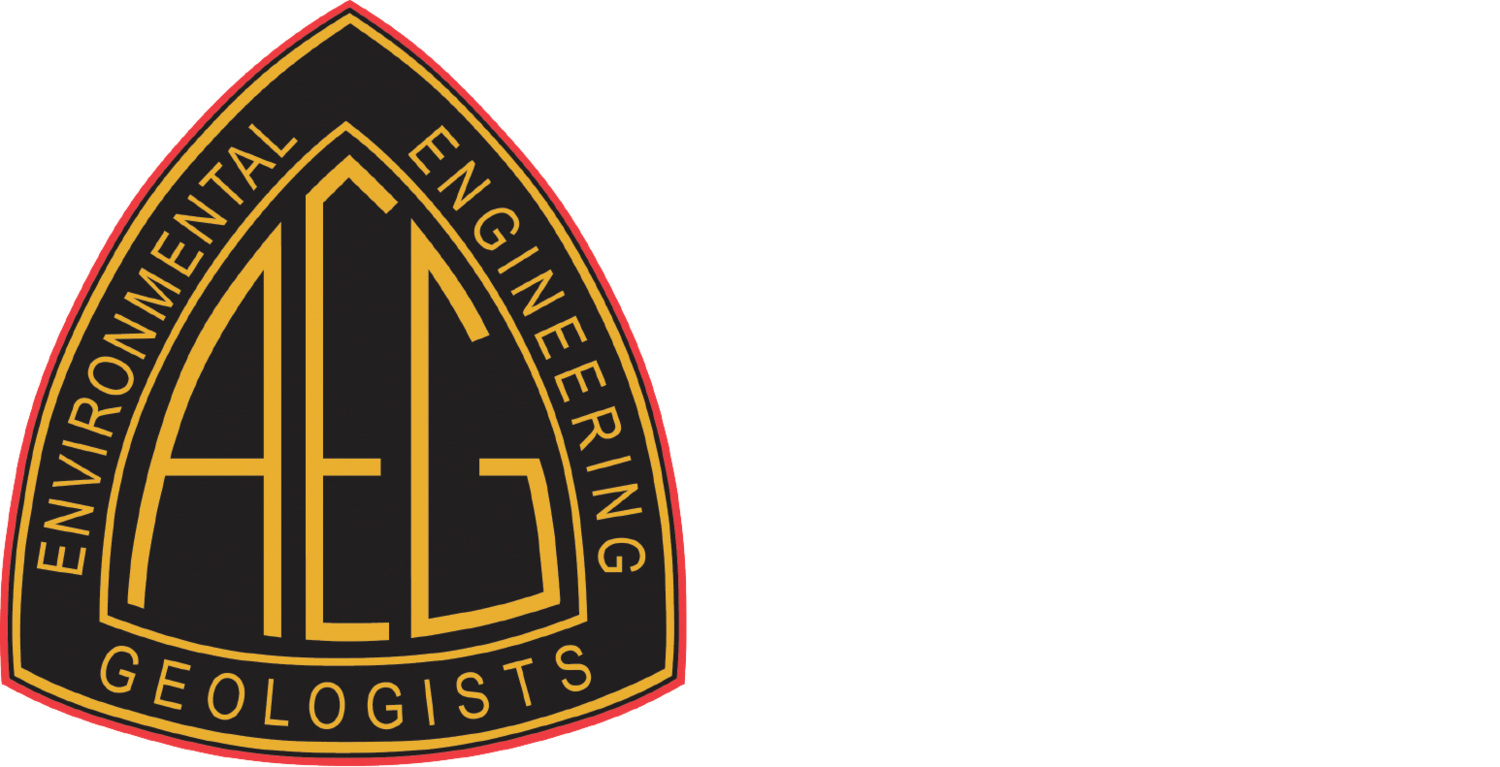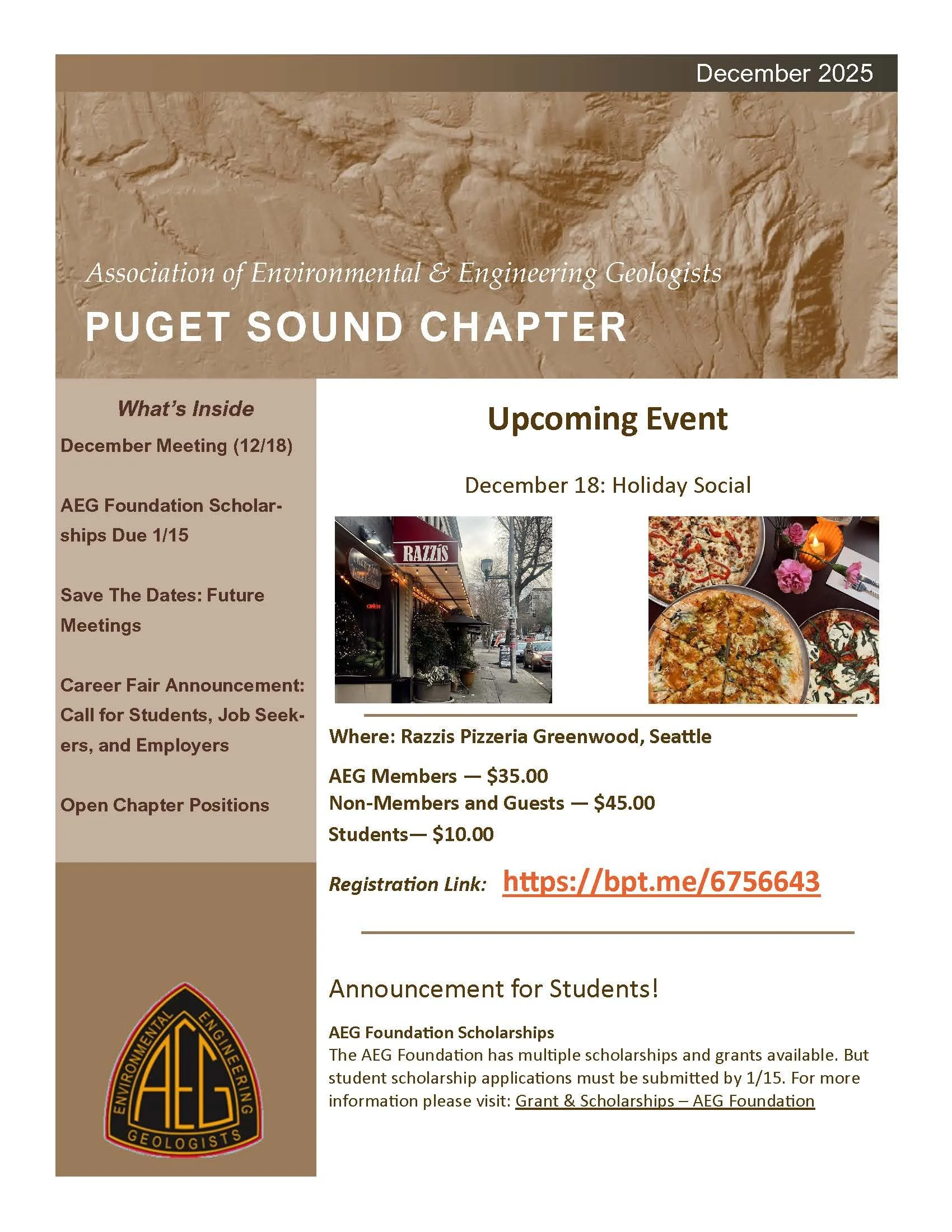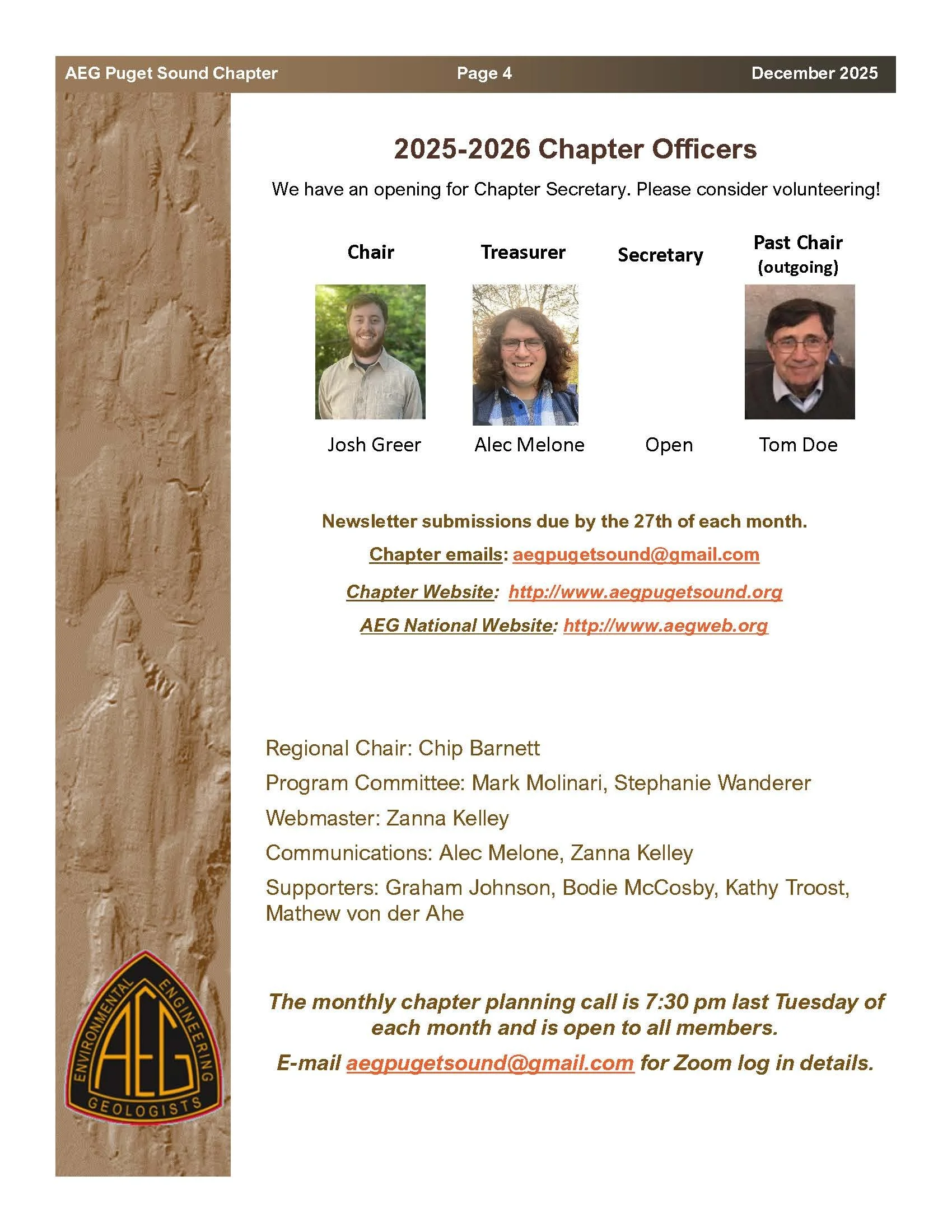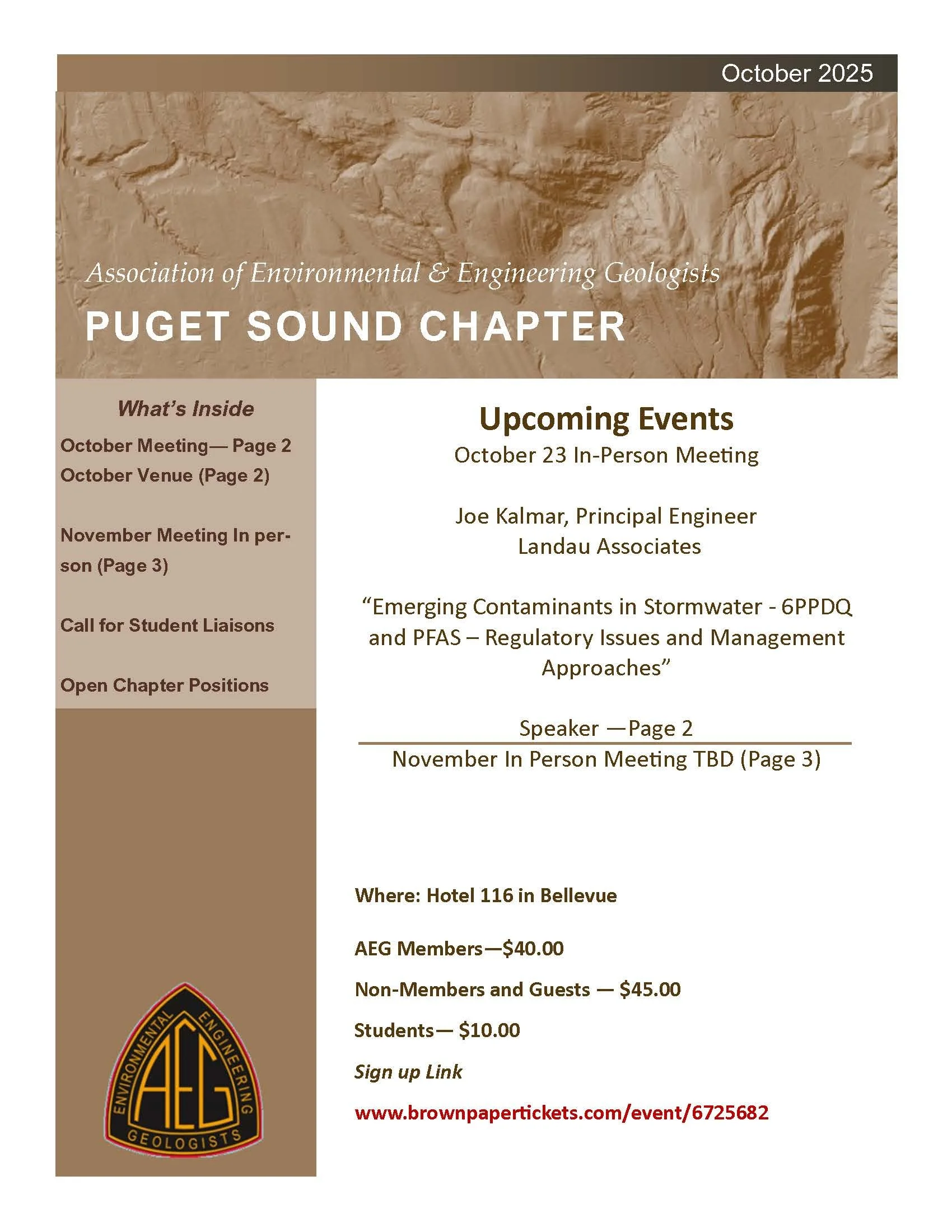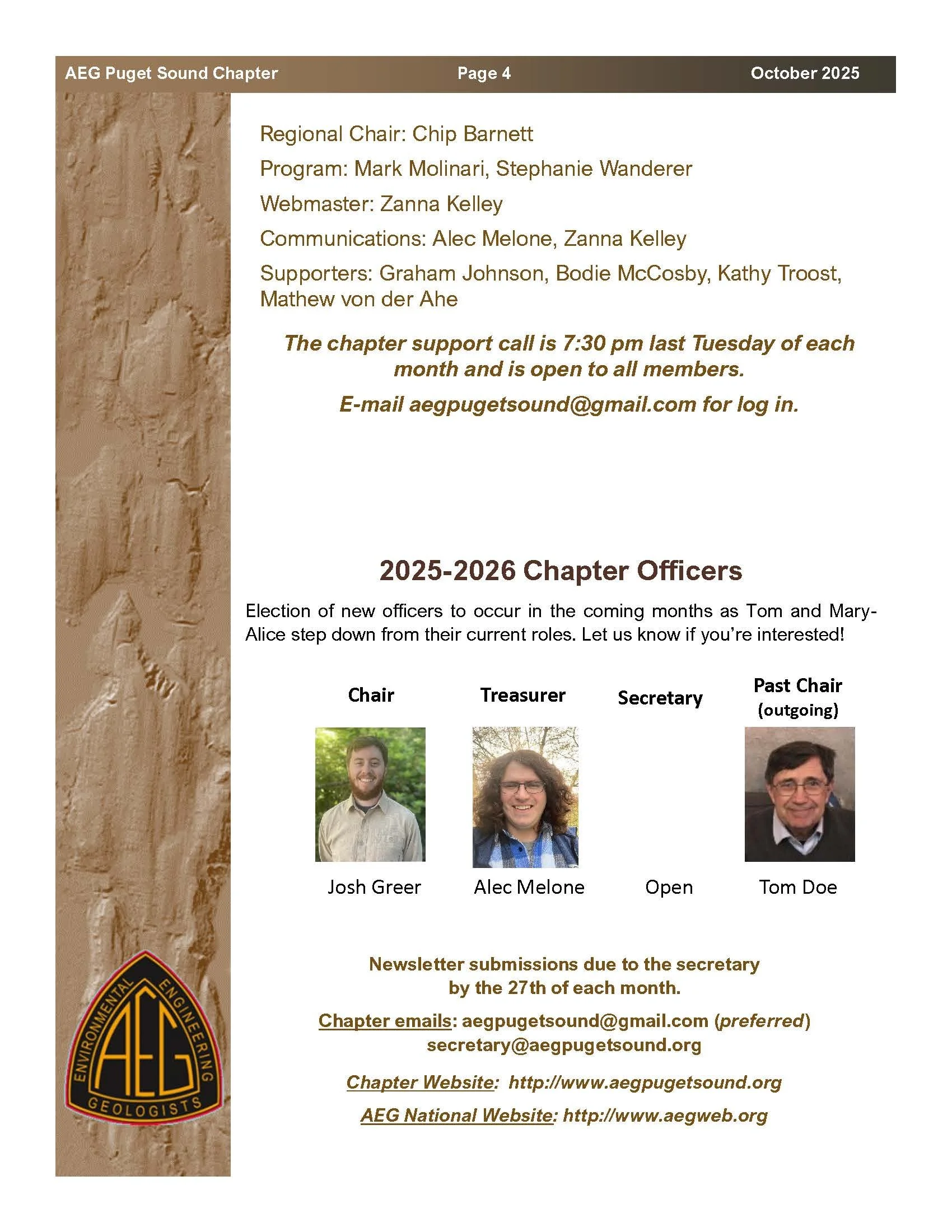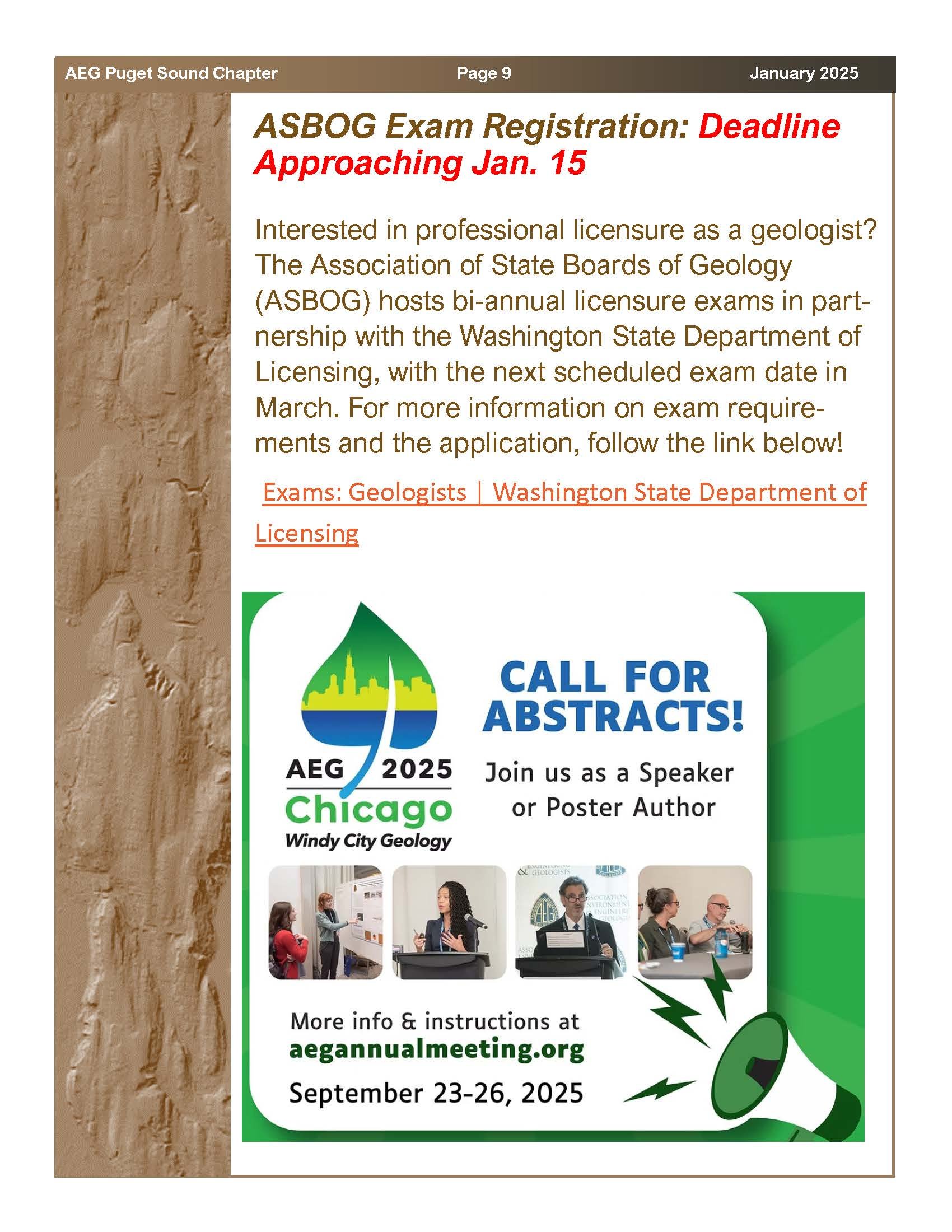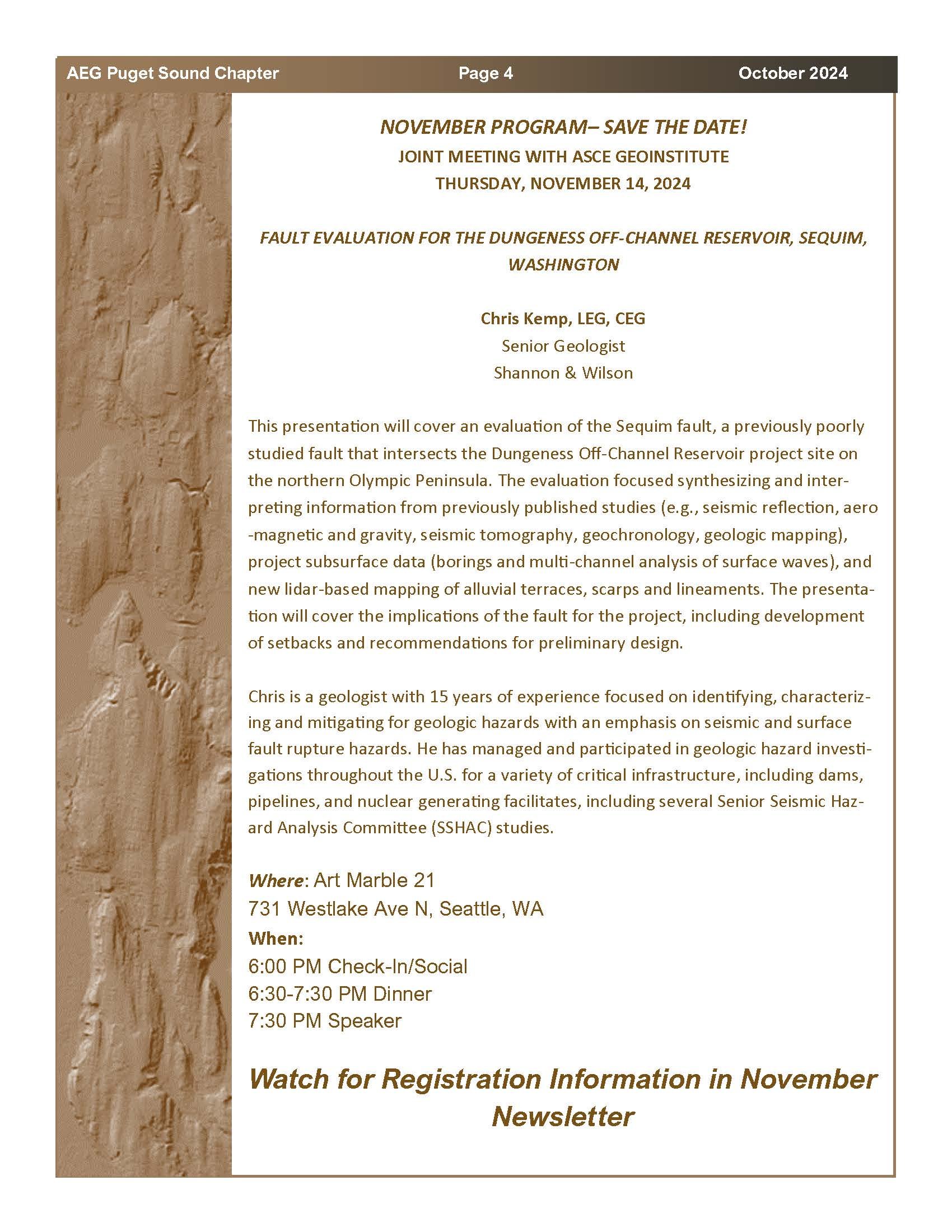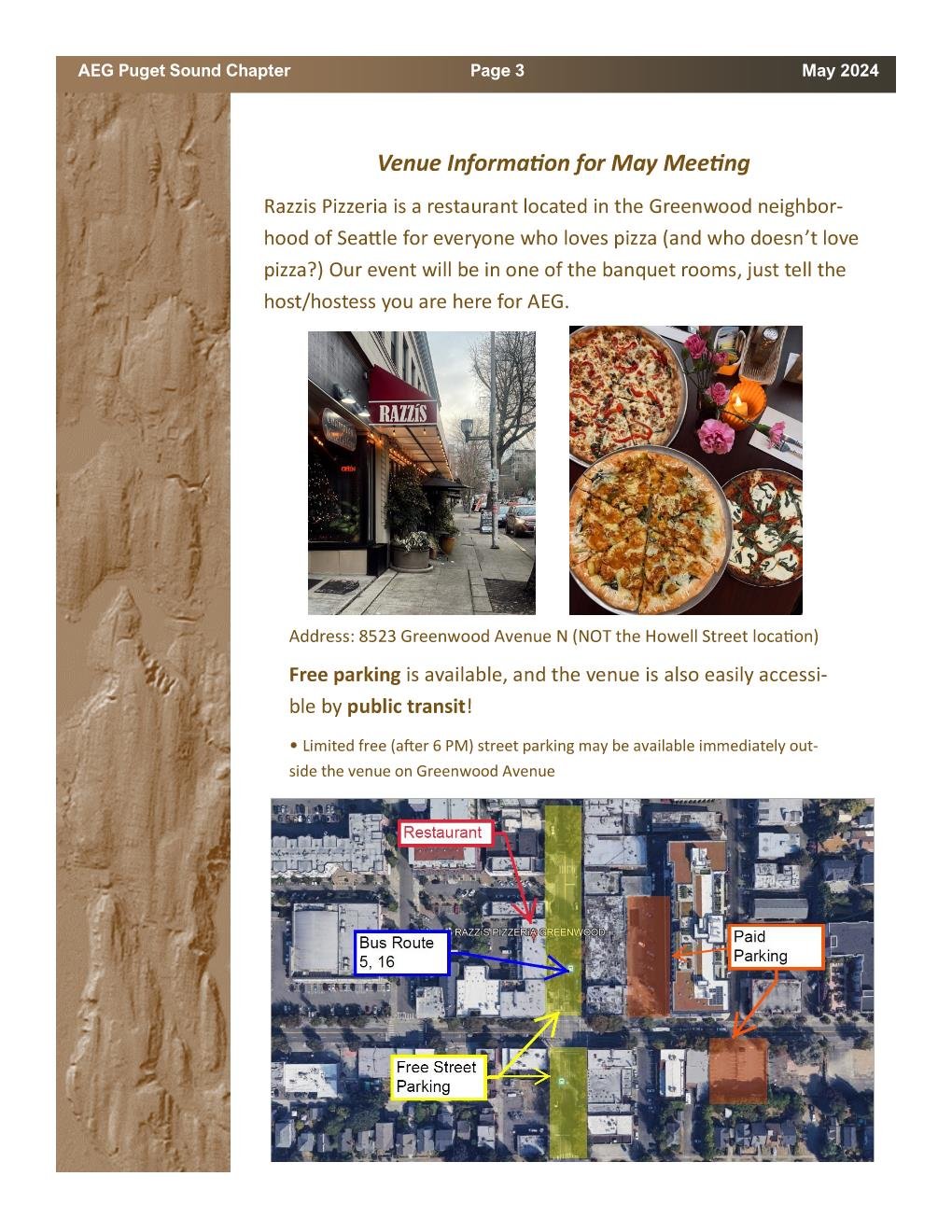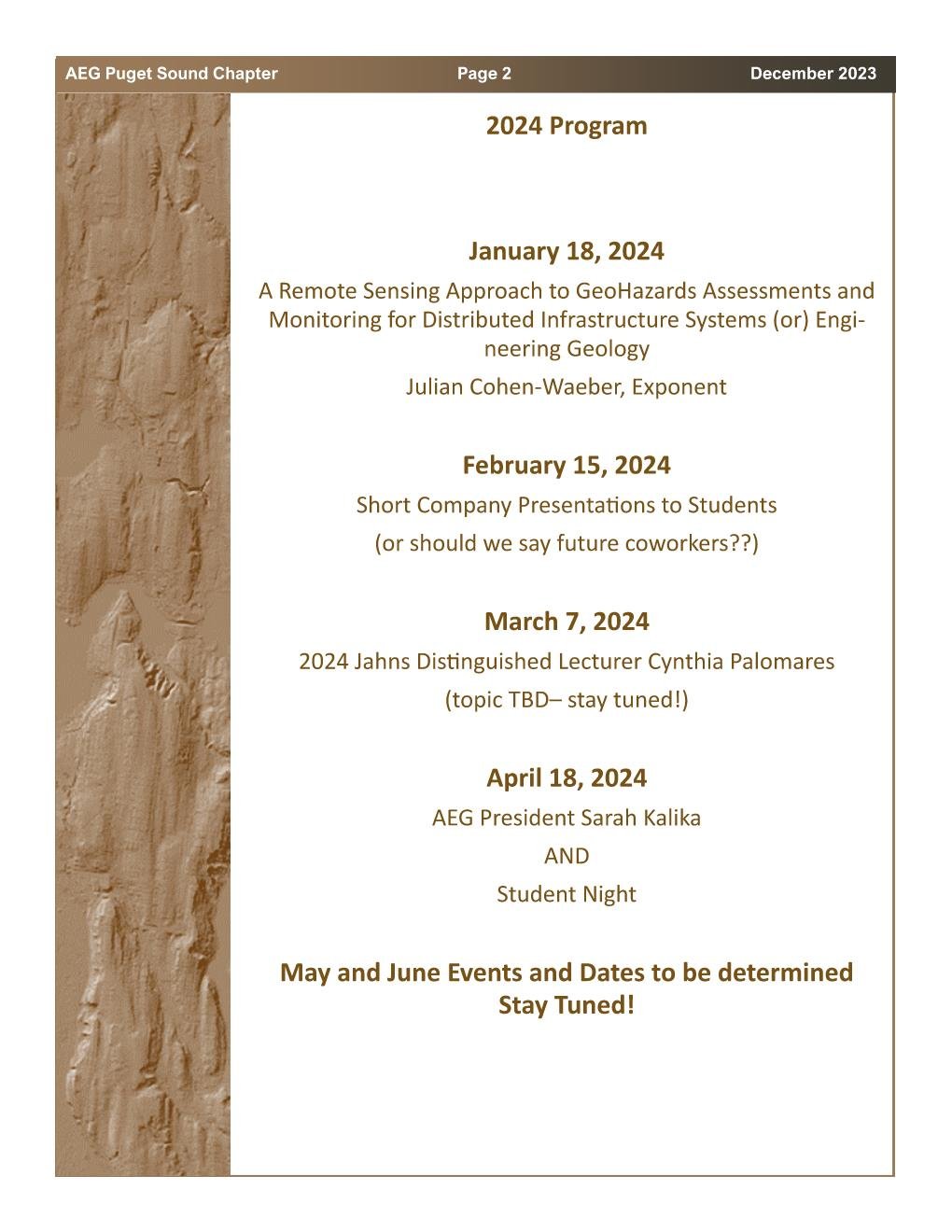November 2025 AEG Newsletter
October 2025 AEG Newsletter
September 2025 AEG Newsletter
May 2025 AEG Newsletter
April 2025 AEG Newsletter
March 2025 AEG Newsletter
February 2025 AEG Newsletter
Reminder! AEG Career Night Coming Up
January 2025 AEG Newsletter
December 2024 AEG Newsletter
Click here for the Brown paper Tickets link.
Teams Meeting is linked here.
AEG Foundation Grant and Scholarship Website.
Please visit the Job Postings page for clickable links.
October AEG Newsletter (Corrected)
Please click here for an active registration link: Brown Paper Tickets
Follow this active link for the Zoom meeting
Please follow this link to go to the AEG Foundation Scholarships
Follow the link below to go to the Job Openings Page:
